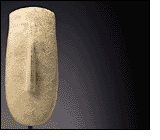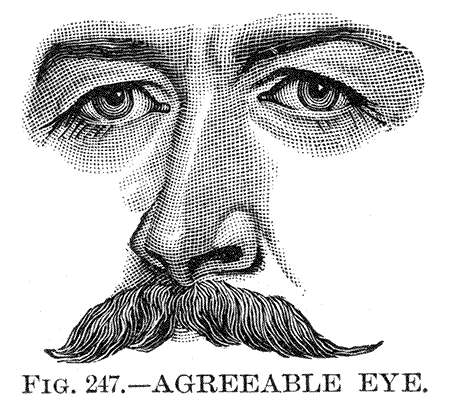of doubtful origin
The news which We desire are not of that nasty species.
 The hipster (who aspires to archeologist street-cred because she worked one summer at Petra) was talking about a scandal involving the Met Museum, a fracas she had heard about while working as a law clerk in New York. An eccentric gentleman had, it seems, written a book pointing out that many of the ancient artifacts in said museum ‘have no provenience’ and that the trustees, curators, & co. were, if not actually hushing the matter up, at least not proclaiming this ‘truth’ in large letters on billboards for the edification of the public.1 Museological shenanigans are nothing new (cf. Elgin Marbles), but the word provenience, which I had never heard before, gave me pause: pro-VEE-nyehns? what about provenance (PROH-veh-nehns)?
The hipster (who aspires to archeologist street-cred because she worked one summer at Petra) was talking about a scandal involving the Met Museum, a fracas she had heard about while working as a law clerk in New York. An eccentric gentleman had, it seems, written a book pointing out that many of the ancient artifacts in said museum ‘have no provenience’ and that the trustees, curators, & co. were, if not actually hushing the matter up, at least not proclaiming this ‘truth’ in large letters on billboards for the edification of the public.1 Museological shenanigans are nothing new (cf. Elgin Marbles), but the word provenience, which I had never heard before, gave me pause: pro-VEE-nyehns? what about provenance (PROH-veh-nehns)?
That I am frequently ignorant and often mistaken, I willingly acknowledge; in this instance, awed perhaps by her sartorial excesses (which, as we know, infallibly signify correct English usage), I assumed – with true faith in my capacity for folly – that provenience was a highly specialized museo-/archeo-logical term, similar but not identical to the more familiar provenance. Just to be sure, though, I referred to my good friend the OED, which said:
provenience, n.
= provenance. Now chiefly U.S. (and to some extent Canad.).
[L. provenient-em, pr. pple. of provenire to provene: see -ence. Preferred to provenance by those who object to the French form of the latter: cf. convenance, convenience.]
I will eschew jokes about freedom-findsites and tell you plainly this entry did not content me. Nor, indeed, did that of the American Heritage Dictionary4 & M-W: ‘Alteration of provenance.’ So I did what any self-respecting idiot would do: I checked usage.
As per Google: Provenience – 26,000 results, the most amusing of which was:
…despite his lack of academic connections and his provenience in the often ideological left…
Other results included:
- ‘…it will not be easy to receive an answer to the provenience of all the vessels…’ Qumran Archeometry
- monuments of unknown provenience at the Mayan Epigraphy Project
- a bibliography for Provenience Studies and Cypriote Sculpture Found Abroad
- The Provenience, Typology and Chronology of Eastern Terra Sigillata (Hebrew University of Jerusalem – Institute of Archaeology, 1983)
- One more article at the NY Times: ‘New Answers to an Old Question: Who Got Here First?‘ (John Noble Wilford, 9 November 1999)
Provenance returned 704,000 results, none of which made me laugh.
Lack of amusement aside, these results seem to confirm two suspicions: 1) most people say provenance – provenience is a word used by acheologists and their ilk; 2) Lewis Lapham likes to make snide jokes his audience really can’t be expected to find amusing. Speaking of Lewis Lapham, I decided to search magazines and, since Harper’s doesn’t put anything online except the index, I searched the The Atlantic: provenience — 0, provenance — 31. Finally, there was this helpful on an archaeology info page:2
Provenience is another word which has a slightly different meaning when used archaeologically. The dictionary defines provenience (a variant of the more common provenance) as ‘origin’ or ‘derivation.’ In the art world, provenance means the history of an object, where it came from and who owned it. It is sometimes used this way in archaeology as well, when referring loosely to the origin of an object. More technically, in archaeology the term refers to the actual position of the object in three dimensions. Thus, an object’s provenience can be stated as being 30m north, 22m east, and 3.5m down from an arbitrary fixed point on the site (called the datum point).
Venturing, then, into the depths of archeological jargon, I searched the relevant journals with JSTOR where, not surprising, the results were much closer: provenience — 1252, provenance — 1481, provenance+provenience — 112. Interestingly, the two earliest entries give provenance in italics (that is, as a French word; see JHS No. 2 (1881): 100, & No. 3 (1882): 285). The first JSTOR entry for ‘provenience’ is in an article written by the English archeologist Percy Gardner, in his article ‘A Sepulchral Relief from Tarentum’ (JHS 5 (1884): 112):
…as to their provenience, it seems to be established that in some cases at all events they come from cemetaries…
Only the year before, Gardner had used provenance (without italics) in his article ‘A Statuette of Eros’ (JHS 4 (1883): 266 — 274):
…on grounds of style this provenance would seem scarcely probable…
I would guess that Gardner, in using provenience, was trying separate the origin of the object from its art-historical provenance and, precisely because the word provenance has cultural baggage, turned to the relative neologism, provenience. Around this time – viz., when I should be drawing conclusions – I became a bit bored with the entire enquiry, and though hipsters exist solely to be mocked, there is only so much effort I wish to expend in the process. Besides, it might seem as though I were trying to score points off the young woman’s false diction, which isn’t the case at all. If she had been nit-pickingly accurate in all other details, it would make sense to fault her for saying provenience – which taken as narrowly as possible should perhaps just refer to the findspot – for very few items spring miraculously out of the ether: they have a provenience, even if it is unknown. That items in the Met should be without a clear history of ownership and origin is, of course, deplorable;3 but it is not much of a surprise and I find it difficult to imagine why anyone would make a fuss about it. Scholars will argue about the dates of objects, about the craftsman who made it, about its role in history, which suggests that the primary characteristic of such facts is their mutability. Solipsism is, however, the refuge of the uninspired and, having found my haven, I will at last be quiet.
- A learned associate has pointed me to an article that mentions Oscar Muscarella’s The Lie Made Great, which is probably the book in question; of all this, however, I remain as ignorant as ignorant can be. [↩]
- [Link rotted]. [↩]
- For an entire museum crammed with items of unknown provenance (and provenience), one might refer to the Gouldandris Museum of Cycladic Art… [↩]
